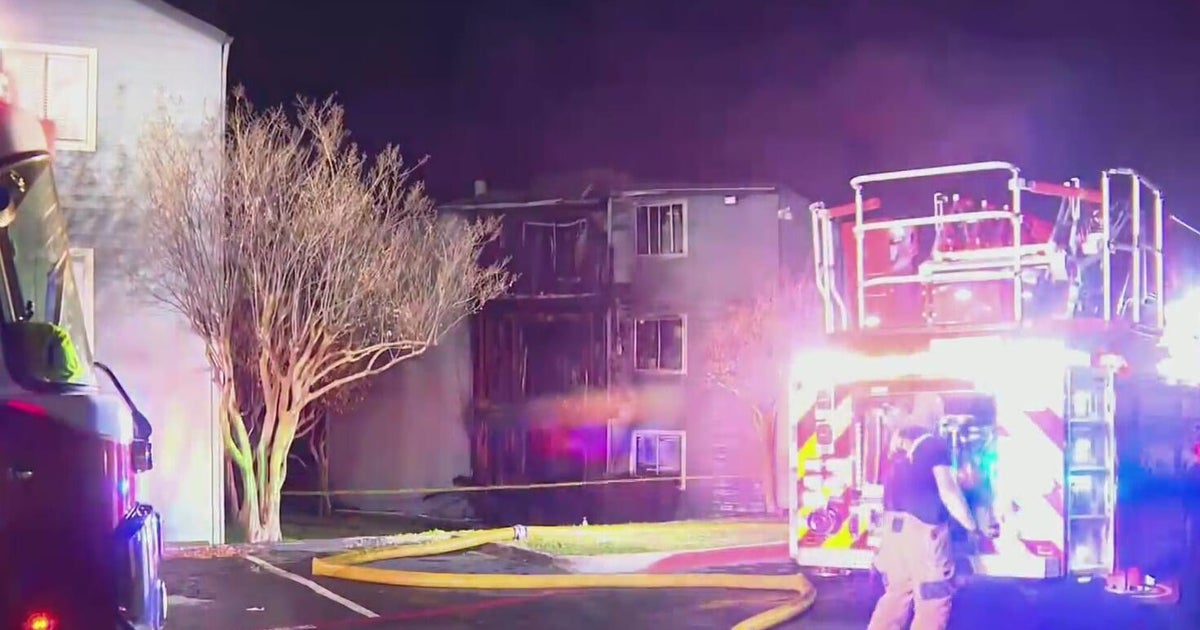Why are allergies so bad in Texas?
DALLAS (CBSDFW.COM) - Some who move to North Texas jokingly claim they're allergic to the area. And some of those claims may not be far off.
Dr. Marie Fitzgerald, an allergy and immunologist based in Flower Mound says she's seen allergies on the rise. And she would know, a she runs North Texas' pollen collection and counting station from the roof of her practice. North Texas cities have consistently been on the asthma and allergy foundation's list of allergy capitals for years now.
WATCH: How is pollen counted in North Texas?
Spring allergy season is at its peak right. There's pollen everywhere on cars, furniture and even on the water.
Southlake resident Parul Kaushik says her allergies became worse when they moved from Minnesota a decade ago. "It became much worse," she says. "The first few years I just couldn't breathe. I couldn't sleep"
Moving out of Texas is a conversation that comes up often in their house. "We've talked about Chicago, I will throw in Denver, lately it's been California," she says.
So why are allergies so bad in North Texas?
CLIMATE CHANGE
Experts say there are many reasons for that, starting with climate change.
High levels of carbon dioxide produces warmer temperature and therefore longer growing season. Long growing season means more pollen in the air.
The asthma and allergy foundation also says air pollutants can change the structure of pollen grains to make it more allergenic.
The allergy season in North Texas lasts for 10 months in a year.
From February to April, it is tree- pollen season. April, May and June bring out the grass pollen. Labor day to Halloween is weed pollen time.
And then it is mountain cedar in the winter.
The only break experts say is from July Fourth to Labor Day, kind of those 100-degree days.
GEOGRAPHIC REGION
We also live in a unique geographic area where the Blackland Prairie meets the Cross Timbers and Prairie region, right around where Dallas and Tarrant meet Collin and Denton.
The area around north Texas has a combination of grasses, trees and shrubs common to both regions and that means we get hit from allergies from both sides.
The Blackland Prairie region is predominantly grass with trees such as elm, cedar and pecan scattered in. Cross timbers region grows trees like post oaks and black jacks.
BOTANICAL SEXISM?
And then there's a theory made popular on TikTok called botanical sexism. It was first floated by a horticulturist Tom Ogren who said the gender of the plants around us may be contributing to our allergies.
"The more female trees, we have the less pollen we'll have. Always. No exceptions to that," he says.
Male trees make pollen -- lots of it. Female trees trap pollen and create fruit.
The theory states allergies are high because landscapers choose to plant male trees for their flowers. Ogren says when female trees drop fruits and berries on the ground, it creates litter.
"In schoolyards, in particular the landscape is often super allergenic," he says. "It may be that they didn't want the kids to pick up any seeds or pods or fruits, so they went out of their way and to make them a sterile as possible, and so they planted many, many male plants."
Ogren argues planting more non-allergenic plants, like the female specials, could potentially reduce pollen.
"I would also say that everybody that improves their own yard makes for less pollen for their neighbors," he says.
WATCH: Full interview with Horticulturalist Tom Ogren
Blevins is skeptical. He says pollen travel in the air and has known to travel for miles. Unless someone lived in a bubble, they couldn't avoid pollen in the air. The debate in social media rages on about botanical sexism but there's agreement on what we can do to try to reduce pollen in the air:
- Plant allergy- friendly trees and plants.
- Insect -pollinating plants are better than wind-pollinators.
- Planting more monoecious trees -- that have both male and female parts
- And staying indoor on windy days.
- Getting tested for the allergies you have to help manage it better.
- Stay indoors in the mornings and afternoons when the pollen count is higher
- Wearing a mask on windy days.
The best time to go outside, especially for severe allergy sufferers like Parul, is right after it rains.







